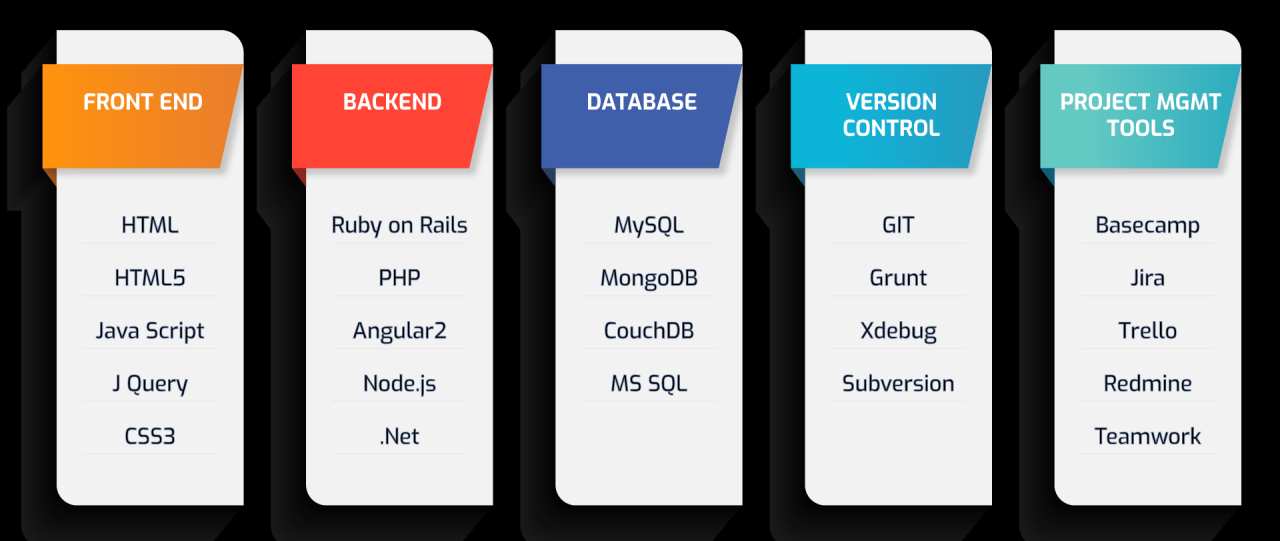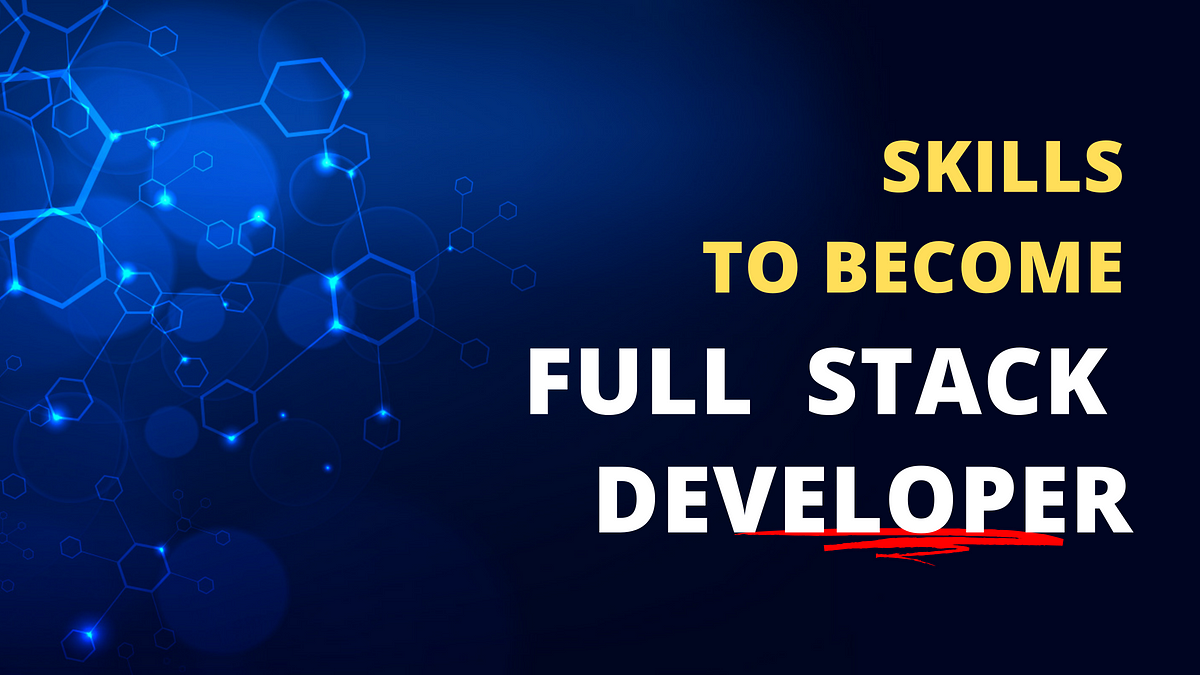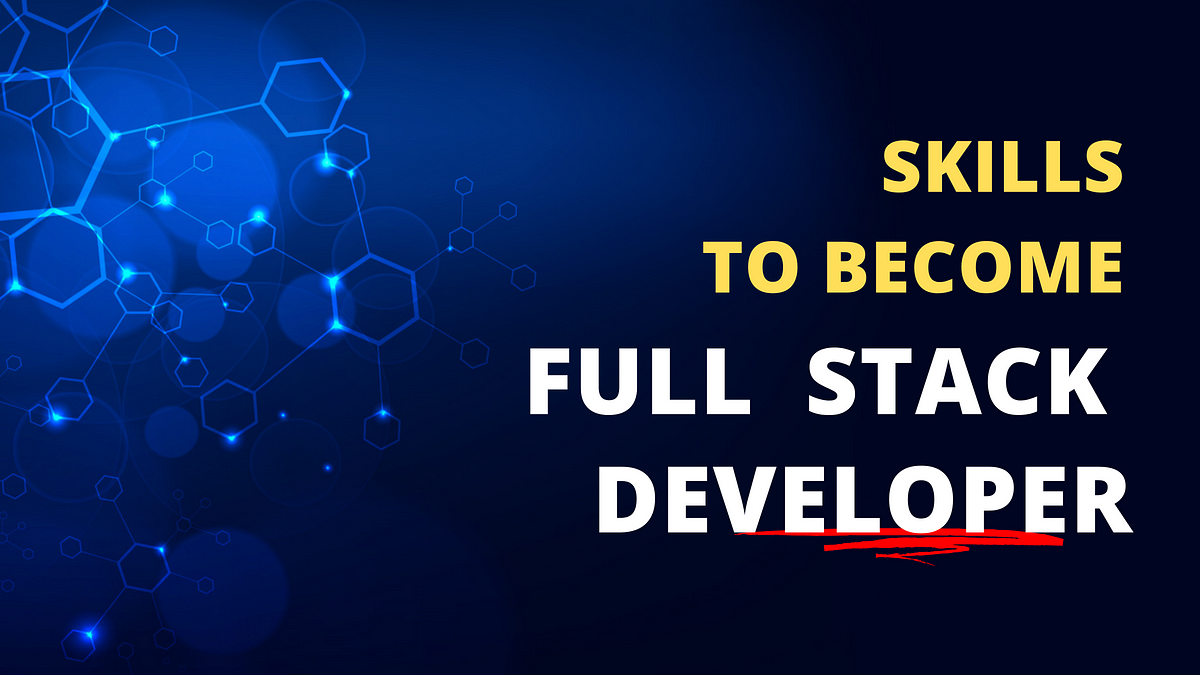Full stack developer career path and required skills offer a dynamic and rewarding journey. This field blends front-end design and user experience with back-end logic and database management, creating a complete picture of web application development. We’ll explore the essential skills, career progression, and the ever-evolving landscape of this in-demand profession.
Becoming a successful full-stack developer requires a blend of technical proficiency and soft skills. This guide will break down the key areas of expertise, from mastering front-end frameworks like React and Angular to understanding back-end languages such as Python and Node.js, and managing databases like MySQL and MongoDB. We’ll also cover crucial aspects like version control with Git, testing methodologies, deployment strategies, and the importance of continuous learning.
Introduction to the Full Stack Developer Career Path
The full-stack developer role has evolved significantly. Initially, it encompassed a broader range of skills, often involving involvement in all aspects of a project. Today, specialization within the front-end and back-end domains is more common, but a strong understanding of both remains crucial. The path often begins with focusing on either front-end or back-end development, gradually expanding skills to encompass the full stack.
Full-Stack Developer Career Progression
A typical career progression might start with an entry-level role as a junior developer, focusing on either front-end or back-end tasks. With experience, developers transition to mid-level roles, taking on more responsibility and demonstrating proficiency in both areas. Senior full-stack developers lead projects, mentor junior colleagues, and contribute to architectural decisions. Further advancement can lead to roles like technical lead, architect, or even management positions.
Front-End vs. Back-End in Full-Stack Development
Front-end development concentrates on the user interface and user experience (UI/UX). Back-end development focuses on server-side logic, databases, and APIs. In a full-stack context, front-end developers build what users see and interact with, while back-end developers handle the data processing and server-side functionality that powers the application. A full-stack developer bridges this gap, possessing skills in both areas.
Full-Stack Developer Career Timeline
A simplified timeline might look like this: Year 1-2: Focus on front-end or back-end fundamentals; Year 2-4: Expand skills to encompass the full stack, working on increasingly complex projects; Year 4-6: Transition to senior roles, leading projects and mentoring junior developers; Year 6+: Assume leadership roles, specializing in architecture or management.
Essential Front-End Skills
Proficiency in HTML, CSS, and JavaScript is fundamental. Modern front-end development often involves using JavaScript frameworks to manage complexity and improve efficiency. Popular choices include React, Angular, and Vue.js, each with its own strengths and weaknesses.
Essential Front-End Technologies
- HTML (HyperText Markup Language): Forms the structure and content of web pages.
- CSS (Cascading Style Sheets): Styles the visual presentation of HTML elements.
- JavaScript: Adds interactivity and dynamic behavior to web pages. Frameworks like React, Angular, and Vue.js provide structured ways to build complex JavaScript applications.
Sample User Interface Code
A simple example using HTML, CSS, and JavaScript to display a greeting:
<!DOCTYPE html>
<html>
<head>
<title>Simple Greeting</title>
<style>
body font-family: sans-serif;
#greeting color: blue; font-size: 2em;
</style>
</head>
<body>
<h1 id="greeting"></h1>
<script>
document.getElementById('greeting').textContent = 'Hello, World!';
</script>
</body>
</html>
Comparison of JavaScript Frameworks
React, Angular, and Vue.js each offer different approaches to building user interfaces. React emphasizes component-based architecture and virtual DOM for efficient updates. Angular is a comprehensive framework with built-in features for routing, state management, and testing. Vue.js is known for its ease of learning and progressive adoption.
Front-End Libraries and Applications
| Library | Description | Application | Example Use Case |
|---|---|---|---|
| React | Component-based library for building user interfaces | Web applications, single-page applications | Building interactive dashboards |
| Angular | Full-fledged framework for building complex web applications | Large-scale web applications, enterprise applications | Developing a complex e-commerce platform |
| Vue.js | Progressive framework for building user interfaces | Single-page applications, interactive components | Creating interactive website elements |
| jQuery | Lightweight library for DOM manipulation | Adding simple interactivity to websites | Handling form submissions |
Essential Back-End Skills
Back-end development involves server-side logic, databases, APIs, and cloud platforms. Proficiency in a server-side language (like Python, Node.js, Java, or PHP), database management, and API design is crucial.
So you’re thinking about becoming a full-stack developer? Awesome! It’s a challenging but rewarding path. To get started, you’ll need a solid understanding of front-end and back-end technologies, and a good resource to check out is this guide on full stack developer career path and required skills. Mastering those skills will open doors to many exciting opportunities in the tech world.
Ultimately, consistent learning and practice are key to success in a full stack developer career path and required skills.
Core Back-End Technologies

- Databases: Relational (SQL) databases like MySQL, PostgreSQL, and Oracle; NoSQL databases like MongoDB, Cassandra, and Redis.
- Server-Side Languages: Python, Node.js (JavaScript), Java, PHP, Ruby on Rails, Go.
- APIs (Application Programming Interfaces): RESTful APIs are commonly used for communication between the front-end and back-end.
- Cloud Platforms: AWS, Google Cloud Platform (GCP), Microsoft Azure.
Relational vs. NoSQL Databases
Relational databases use structured tables with defined relationships between data. NoSQL databases offer more flexibility for handling unstructured or semi-structured data. The choice depends on the application’s requirements.
RESTful API Best Practices
RESTful APIs should follow principles like using standard HTTP methods (GET, POST, PUT, DELETE), consistent resource naming, and proper status codes to communicate success or failure. Proper documentation is also essential.
Setting Up a Simple Web Server
Setting up a simple web server using Node.js and Express.js involves installing the necessary packages, creating a server instance, defining routes, and handling requests. Example code would demonstrate this process.
Database Management and Interaction
Understanding database management systems (DBMS) and how to interact with them is critical for full-stack developers. This involves designing database schemas, writing SQL queries, and potentially using Object-Relational Mappers (ORMs).
Database Management Systems (DBMS)

Various DBMS exist, each with strengths and weaknesses. Choosing the right one depends on factors like scalability, data structure, and the application’s requirements. Examples include MySQL, PostgreSQL, MongoDB, and others.
Database Schema Design
Designing a database schema involves defining tables, columns, data types, relationships, and constraints to ensure data integrity and efficiency. The process typically involves analyzing the application’s requirements and modeling the data.
SQL Querying and Data Manipulation
SQL (Structured Query Language) is used to query, insert, update, and delete data in relational databases. Basic SQL commands include SELECT, INSERT, UPDATE, and DELETE.
Using an ORM

ORMs (Object-Relational Mappers) simplify database interaction by mapping database tables to objects in the programming language. Popular ORMs include SQLAlchemy (Python), Sequelize (Node.js), and Hibernate (Java).
Version Control and Collaboration
Version control systems (like Git) are essential for managing code changes, collaborating with others, and tracking project history. Understanding branching, merging, and conflict resolution is vital.
Importance of Version Control Systems
Git allows developers to track changes, revert to previous versions, collaborate effectively, and manage different branches of development simultaneously. It’s a fundamental tool in modern software development.
Branching, Merging, and Conflict Resolution
Branching creates separate lines of development. Merging combines changes from different branches. Conflicts arise when changes are made to the same lines of code in different branches, requiring manual resolution.
Collaborative Coding Best Practices
Effective collaboration involves using clear commit messages, frequent pushes to a central repository, and utilizing platforms like GitHub or GitLab for code review and issue tracking.
Step-by-Step Guide to Using Git
A step-by-step guide would cover initializing a Git repository, staging changes, committing changes, branching, merging, and resolving conflicts. It would also explain using remote repositories (like GitHub).
Testing and Debugging

Thorough testing and effective debugging are crucial for building reliable software. Different testing methods help identify issues at various stages of development.
Types of Software Testing
- Unit Testing: Testing individual components or modules of code.
- Integration Testing: Testing the interaction between different components.
- End-to-End Testing: Testing the entire application flow from start to finish.
Debugging Front-End and Back-End Issues
Debugging involves identifying and fixing errors in code. Techniques include using browser developer tools for front-end debugging and logging, debugging tools, and setting breakpoints for back-end debugging.
Debugging Tools and Techniques
Tools like browser developer tools, debuggers (integrated into IDEs), and logging libraries are essential for identifying and resolving errors. Techniques include setting breakpoints, stepping through code, and inspecting variables.
Comprehensive Testing Strategy
A comprehensive testing strategy involves planning different testing types, defining test cases, and automating tests where possible to ensure code quality and prevent bugs.
Deployment and DevOps
Deploying a web application involves moving the code from a development environment to a production environment. DevOps practices aim to automate and streamline this process.
Deploying to a Cloud Platform
Cloud platforms like AWS, GCP, and Azure provide services for deploying and managing web applications. The process typically involves setting up servers, configuring databases, and deploying the application code.
Continuous Integration and Continuous Deployment (CI/CD)
CI/CD automates the build, testing, and deployment process. This ensures faster release cycles and reduces manual errors.
The Role of DevOps
DevOps emphasizes collaboration between development and operations teams to improve the software development lifecycle. It focuses on automation, monitoring, and continuous improvement.
So you’re thinking about a full-stack developer career path? It’s a challenging but rewarding journey requiring skills in front-end, back-end, and databases. To create engaging e-learning content, though, you might need to consider adding audio, which is where learning how to choose the best AI voice generator for e-learning becomes helpful. This extra skill can make your projects stand out.
Ultimately, a successful full-stack developer is adaptable and always learning new technologies.
Comparison of Deployment Strategies
| Deployment Strategy | Description | Pros | Cons |
|---|---|---|---|
| Blue/Green Deployment | Deploying to a separate environment and switching traffic | Minimizes downtime, easy rollback | Requires extra infrastructure |
| Canary Deployment | Deploying to a subset of users before full rollout | Reduces risk, allows for feedback | More complex to implement |
| Rolling Deployment | Gradually updating servers one by one | Minimizes downtime, gradual rollout | Can be complex to manage |
Soft Skills and Professional Development: Full Stack Developer Career Path And Required Skills
Technical skills are crucial, but soft skills are equally important for success as a full-stack developer. Continuous learning and professional development are also essential in this rapidly evolving field.
Essential Soft Skills
- Communication: Effectively conveying technical information to both technical and non-technical audiences.
- Teamwork: Collaborating effectively with other developers, designers, and stakeholders.
- Problem-solving: Identifying and resolving complex technical challenges.
Continuous Learning and Professional Development
The tech landscape is constantly changing. Full-stack developers must stay updated with new technologies and trends through online courses, workshops, conferences, and self-study.
Building a Strong Professional Network
Networking with other developers through online communities, conferences, and local meetups helps build connections and expand opportunities.
Skill Development Plan, Full stack developer career path and required skills
A skill development plan should identify areas for improvement, set learning goals, and Artikel strategies for achieving those goals. It should be regularly reviewed and updated.
Illustrative Example: E-commerce Website Development
Developing an e-commerce website involves a combination of front-end, back-end, and database technologies. Security is a critical consideration.
Architectural Design
The architecture would typically involve a front-end for user interaction, a back-end for handling orders, payments, and inventory management, and a database to store product information, user accounts, and order details.
Technologies and Frameworks
Technologies might include React or Vue.js for the front-end, Node.js or Python with a framework like Django or Flask for the back-end, and a database like PostgreSQL or MySQL.
So you want to be a full-stack developer? That means mastering front-end and back-end technologies, a pretty stellar skillset! It’s a demanding but rewarding path, requiring dedication and continuous learning. Take a quick break to check out this amazing celestial event – Venus Moon duo and Quadrantids meteors stun stargazers – then get back to those coding tutorials! Remember, consistent practice and problem-solving are key to succeeding in this exciting career.
Front-End, Back-End, and Database Components
The front-end would handle product display, shopping cart functionality, and user authentication. The back-end would manage order processing, payment gateways, and inventory updates. The database would store all the persistent data.
Security Considerations
Security is paramount. Measures would include secure authentication, input validation, protection against SQL injection, and secure handling of payment information (e.g., using established payment gateways).
Last Recap
Mastering the full-stack developer skillset opens doors to a fulfilling and lucrative career. By consistently honing your technical abilities, cultivating strong communication skills, and embracing continuous learning, you can build a successful and adaptable career in this exciting field. Remember, the journey is ongoing – embrace the challenges, celebrate your successes, and never stop learning.
FAQ Compilation
What’s the average salary for a full-stack developer?
Salaries vary widely based on experience, location, and company size. Expect a range from entry-level to senior-level compensation.
How long does it take to become a full-stack developer?
It depends on your prior experience and learning pace. Bootcamps offer intensive programs, while self-study can take longer. Consistent effort is key.
Which programming language should I learn first?
There’s no single “best” language. JavaScript is crucial for front-end, while Python or Node.js are popular back-end choices. Choose one and build a strong foundation.
What are the best resources for learning full-stack development?
Online courses (Udemy, Coursera), bootcamps, documentation, and open-source projects are excellent resources. Find what learning style suits you best.
